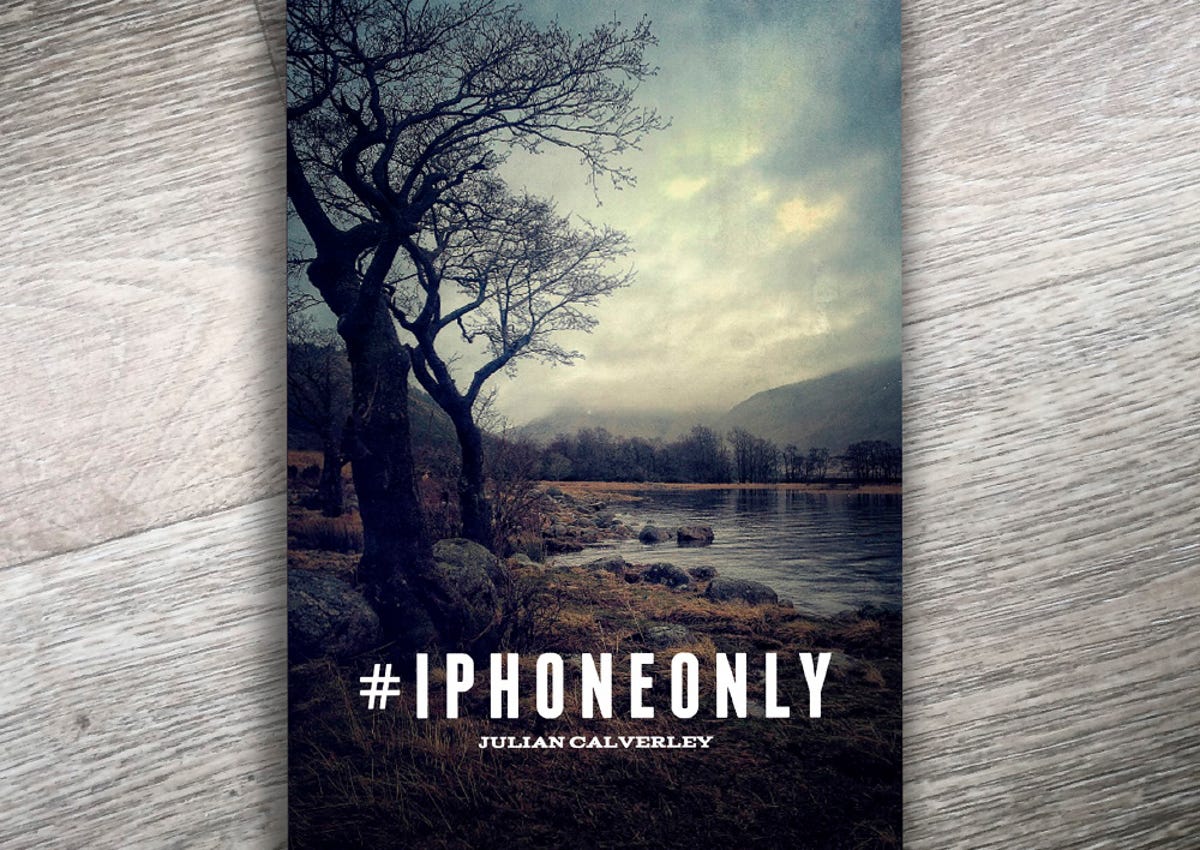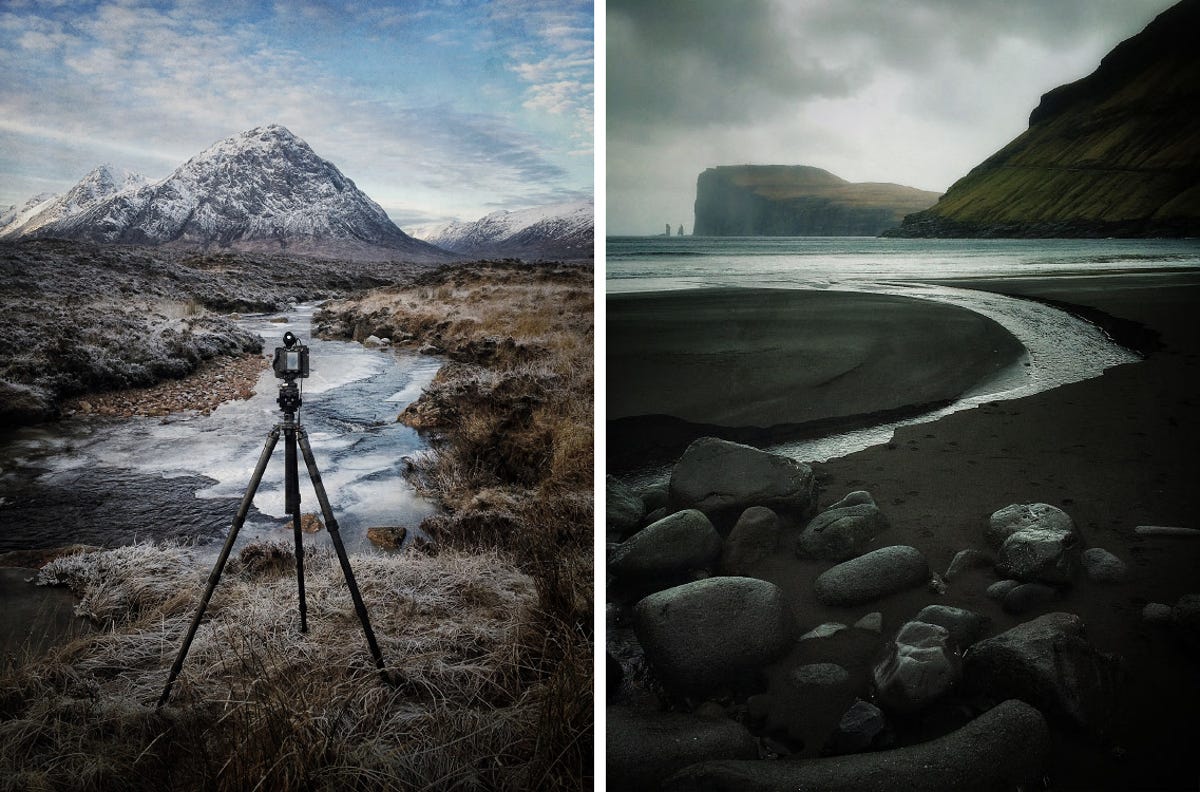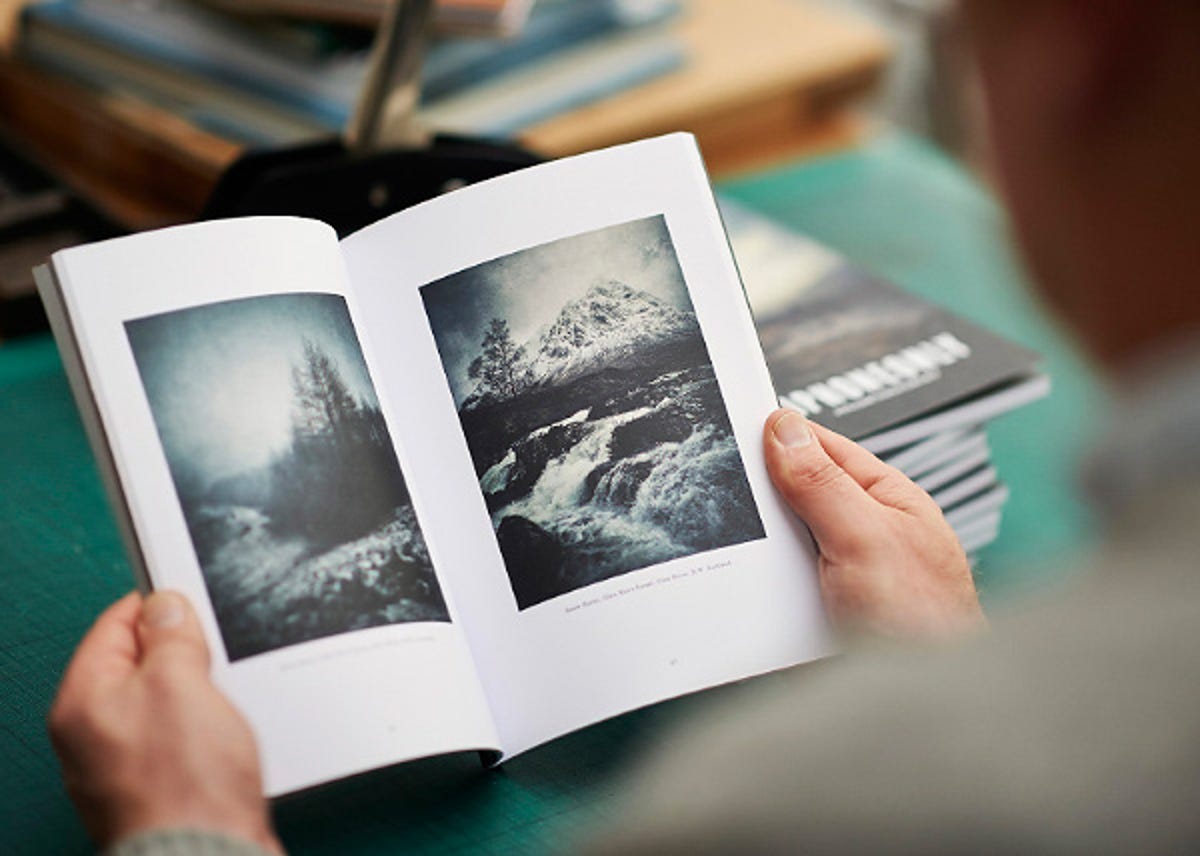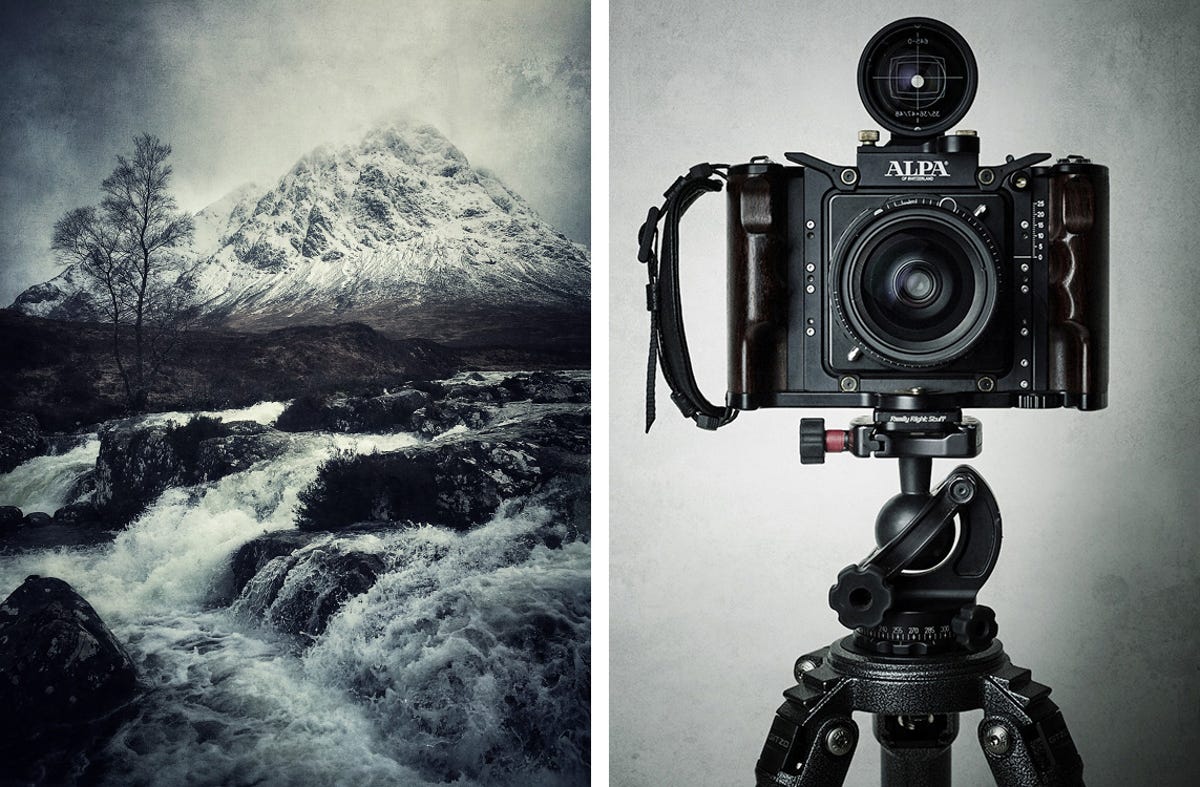
Julian Calverley
Taking photos has long been one of the main selling points of the iPhone, but mobile photography has largely remained the realm of enthusiastic amateurs, populating Instagram and other social networks with artful snapshots. With their lower resolution and lack of upgradeable lenses, phones haven’t played a big role in professional photography.
Commercial photographer Julian Calverley, however, views his iPhone as more than just a casual tool. More accustomed to working with clients such as Audi and Aston Martin on large advertising photo shoots, Calverley has embraced his iPhone on his landscape shoots, resulting in not only an exhibition, but also a printed book featuring shots taken only with his trusty mobile.
I caught up with him to find out more.
You’re used to using very high-end photography equipment, so what was the appeal of using an iPhone?
“I’ve been on Instagram for a while, encouraged by a friend of mine — he said it’s good fun and there’s a good community going. It’s the first time ever I’d used my phone to take pictures. I sort of got into it and it just grew and grew. I was quite surprised at just how much I enjoyed using it.
“It was a new-found freedom really. This thing was always in my pocket — in the past, everything was thought about. I had to think, ‘OK, I’m going to take my camera out, I’m going to take X amount of gear with me.’
“I’m used to carting around a lot of equipment — my Alpa camera with the PhaseOne IQ180 back is worth around 50 grand — but [the iPhone] is just this single device. You don’t need to think about taking it with you. You don’t even need to think about controls really. There’s a degree of control with focus and exposure, but other than that, it’s basic.”
Has your subject matter differed much on the phone than with your usual equipment?
“I still love landscapes, they’re all personal images. I do shoot a few behind the scenes things on commercial jobs — as long as I’m not giving anything away. I guess it’s allowed me to photograph stuff I wouldn’t normally do. The stuff in the book isn’t that dissimilar to my other work. Often they’re pictures I take when I’m scouting locations or waiting for the weather to change.


Julian Calverley
“I treat [Instagram] a bit like a blog now, there’s information about the shoot, a bit about the book, but you have to be very careful on Instagram — you can turn people off very quickly by plugging too much.”
Do you go out to shoot specifically on the phone?
“Not really. Generally, if I’m out with the family, I might do a couple, but I don’t go out specifically to use the phone. It’s always with me and if I see something, then great.
“Part of the fun is emulating what I do with the bigger camera. In many cases, I’ve done a shot on the phone then gone back and done it again on the large camera the next day — often regretting I didn’t do it at the time if the sky isn’t as good!”
You’ve worked with big name clients on commercial projects — has the iPhone played a part in any commercial projects yet for you?
“People are already commissioning jobs on the phone — they’re actually asking for things to be shot on phones. Mostly to accompany a shoot — a behind the scenes or social media side they want to cover. They want it to have that personal feeling you get with a mobile phone camera.


Julian Calverley
“My actual commercial advertising work is still all done on the Alpa. My commercial clients want everything to be as big as possible, they want to be able to crop it long and thin for a website, tall and thin for an exhibition stand — they want everything out of a single shot and the iPhone’s resolution simply doesn’t offer that.”
How important has social media been for you?
“For me, it’s really important. And importantly, I enjoy it, which I think you have to. If you hate it, you’re not going to embrace it. Twitter, Instagram and my blog — those three are my sweet spot.
“I think a lot of older photographers who don’t embrace social media are absolutely missing a trick. It’s not even a trick, it’s another language that everyone’s speaking and you either speak it or you don’t, and if you don’t you’re missing out on a large chunk of communication.
“Some well known landscape photographers aren’t on Twitter, yet they’re trying to sell their books and scratching their heads, wondering why people aren’t buying them. It’s because no one knows it’s there.
“But I enjoy it, building a following. It’s fascinating. It’s so powerful.”
Many traditional photographers often refer to the simplicity of digital photography, even on dSLRs, as ‘cheating’ — how have they responded to work done on a phone?
“I haven’t had any negative feedback. If anything, I’ve seen more photographers going out and using their phones. I think it’s about perception — you don’t need all the gear. You can do it on your phone, or you can go out with just one lens and make beautiful pictures. People have been very positive — people have written to me to say they’ve been inspired themselves to go out with their phones. That’s really satisfying.
“I never expected to get such positive feedback. Photography is very personal though and I don’t expect everybody to like [my work]. They’re very moody and dark and people can say ‘depressing’, but they’re not for me. I haven’t turned a sunny day into a rainy afternoon — it was like that.
“At the launch of the book at the Snug Gallery, one of the things that really stuck out was how inspiring the book had been to some people. There was one particular lady who had a lot of camera gear, but as she’d got older she was physically less capable of carrying it around. But she had an iPhone — she initially couldn’t believe they’d been done on the phone.
“She was inspired to then start taking pictures again because she’d seen what’s possible with it. It was lovely to see someone like her being inspired to go out and take pictures. There’s a perception that it can’t take photos like that, but it’s still a camera.”
How would you respond to criticism that iPhone photography is less valuable than traditional film photography, where each shot has to be crafted?
“It’s all about perception. You don’t have to rattle off loads of shots, you can still just take 10. I would never go back to film. The quality is better now, the ability to approve something on a shoot is there — it takes out the risk.
“You can go out and shoot and process a film and then play with it in the darkroom — much like you take a picture digitally and do the post production. Nothing’s really changed — only perception. People say, ‘Oh it’s been photoshopped,’ but in the old days, it was very acceptable to dodge and burn on a print. It’s just the same.


Julian Calverley
“The downside is that people think anyone can take a picture now. Because software and camera equipment has dumbed the process down so much it’s easier to get a good result. Obviously, you can’t ‘buy’ composition and lighting.”
What are the things that set people apart?
“You still need to have an eye for a good shot. That will never change. Also from a commercial point of view, you need to be able to handle the pressure of a large shoot. A lot of people can take a good photo of a sunset, but turning up at a commercial shoot to create a series of ads — you still need a lot of skills to make that possible.
“Just because you own a nice camera, doesn’t mean you can take a great shot. Composition, lighting and understanding a subject are things that will always remain. There is so much photography out there now. It’s just everywhere. It’s harder even for a professional to stand out. At the end of the day a great shot will always be a great shot.”
What advice do you have for getting the best shot from a phone?
“Avoid things that are really contrasty, because of the dynamic range of the phone. I tend to go for simple scenes, simple compositions. The nice thing is, because you’re doing it on a phone, you have a reasonable sized preview — if an image works at that size, you’re onto something.
“It’s very easy for the lens to get dirty when you’re taking it out of your pocket, so make sure you give it a wipe with a cloth — that’s basic, but it’s important. Always keep the horizons horizontal. You can correct that in apps, but you’ll lose quality to crop in.
“Try not to burn out any highlights. I try to make sure that the lightest part of the scene is exposed for. You can press on different parts of the scene to vary the exposure to make sure the highlights aren’t burned out.
“I do the editing on Snapseed — apart from the phone’s own camera app, that’s the only app I use. I want to keep it simple. Some people will use three or four apps and stack the effects.
“I shoot with the phone’s own app to get the largest file size. I then import that into Snapseed, and then export it back to camera roll. That way you retain the largest file size. The originals have always been the best quality and once you put them through apps like Instagram that crops the image, you lose quality.”
What are your favourite locations to shoot?
“Scotland is a big one. I feel very at home there, I love the drama. For me, photography is very much about being in a place that makes you feel a certain way, and the photography comes afterwards. Because I used to go there as a kid, I have quite an emotional connection with the place.
“You’ll see there’s a theme running through the book — a lot of the shots are taken on poor weather days, when a lot of people wouldn’t think to shoot. But those dramatic, moody skies really suit the place.”
Julian Calverley’s book “#IPHONEONLY” is available to buy directly from his website and you can see more of his workon his Instagram account.




